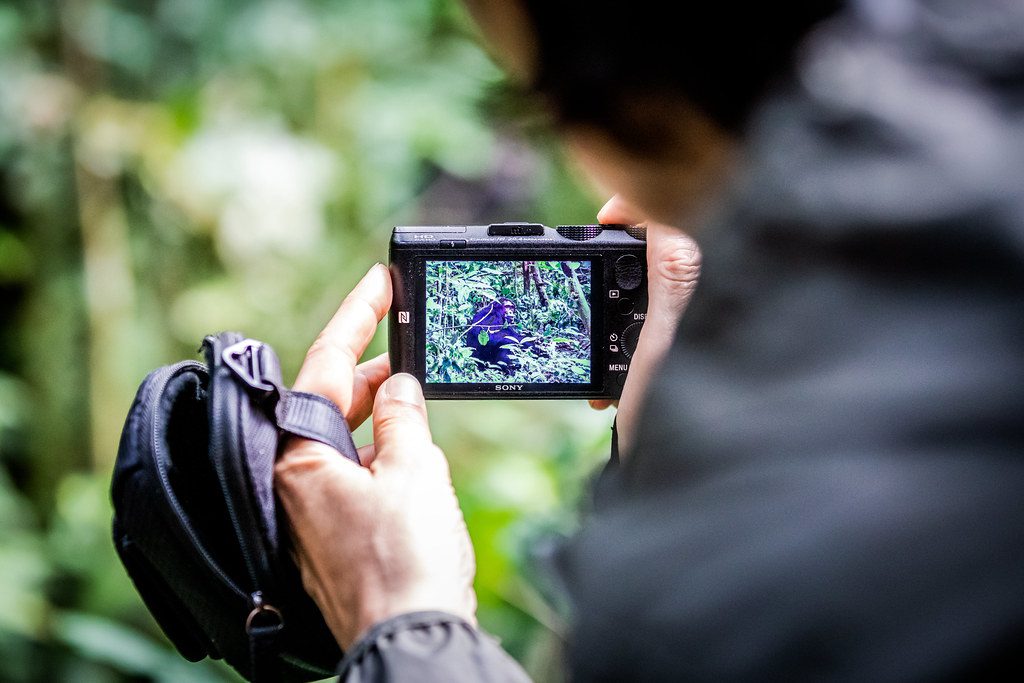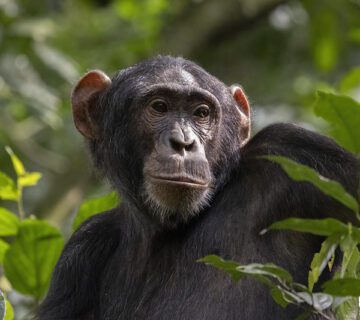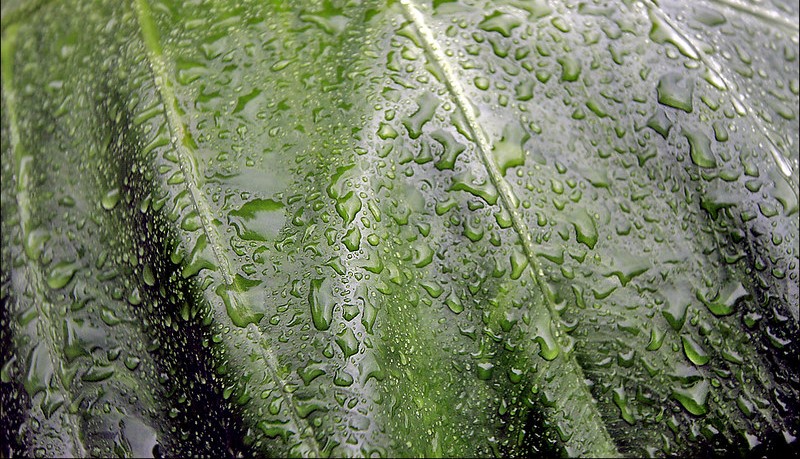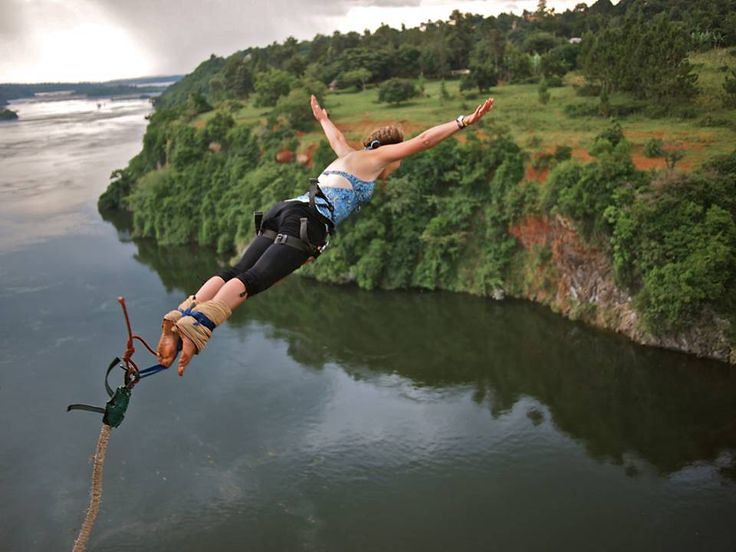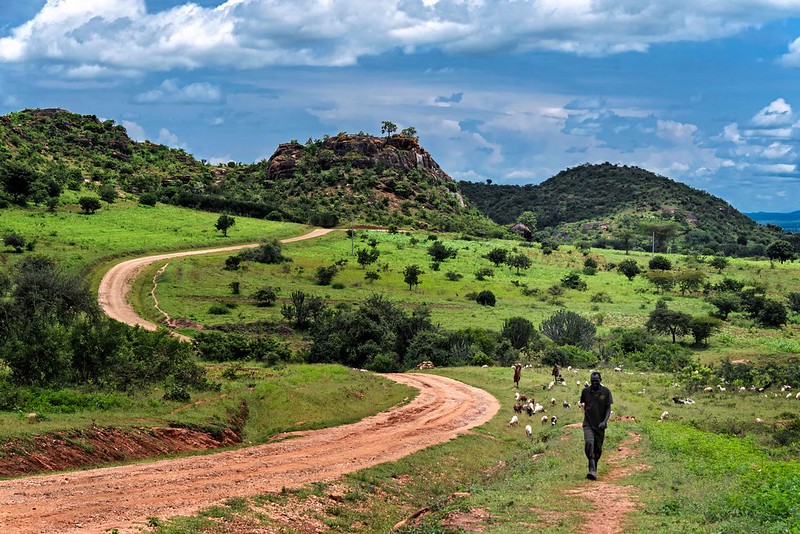East Africa’s Best Chimpanzee Trekking Locations: The fascination of chimp trekking is more personal than the heart-pounding excitement of predator hunting on savannah safaris. Consider yourself in the expressive face of an animal with which you share 98 per cent of your DNA. You’ll be amazed to see how these sociable primates engage with one another, hold their young, and play goofy in a delightfully familiar way. It’s no wonder that it ranks among travellers’ favourite African experiences since it’s unforgettable.
The Chimpanzee hiking Safari experience is one-of-a-kind. As you begin your chimp journey, your guide looks for yesterday night’s nests—bunches of leaves high in the dark canopy that you wouldn’t have discovered on your own. You wander along a trail comprised of twisted branches and fruit with biting scars. Unfamiliar bird sounds may be heard all across the woodland.
A tree branch sways violently. Along with the loud rustling of the leaves, you hear a hoot. When you glance up, the chimp, our closest living cousin, is standing directly in front of you. It’s exactly like being in a live, real documentary.
Do you want to see chimps in the wild? This page explains the greatest places to see chimps in East Africa, as well as what it’s like to go on a chimp trek. The bulk of chimps in East Africa live in West Uganda and Tanzania, where primatologist Jane Goodall conducted important investigations of chimp behaviour.
However, Rwanda, which is also well-known for its mountain gorillas, another big ape, gives the opportunity to view chimps. They can even be seen in Kenya. Despite not being native to the area, two populations of chimps reside in the Ol Pejeta Conservancy near Mount Kenya.
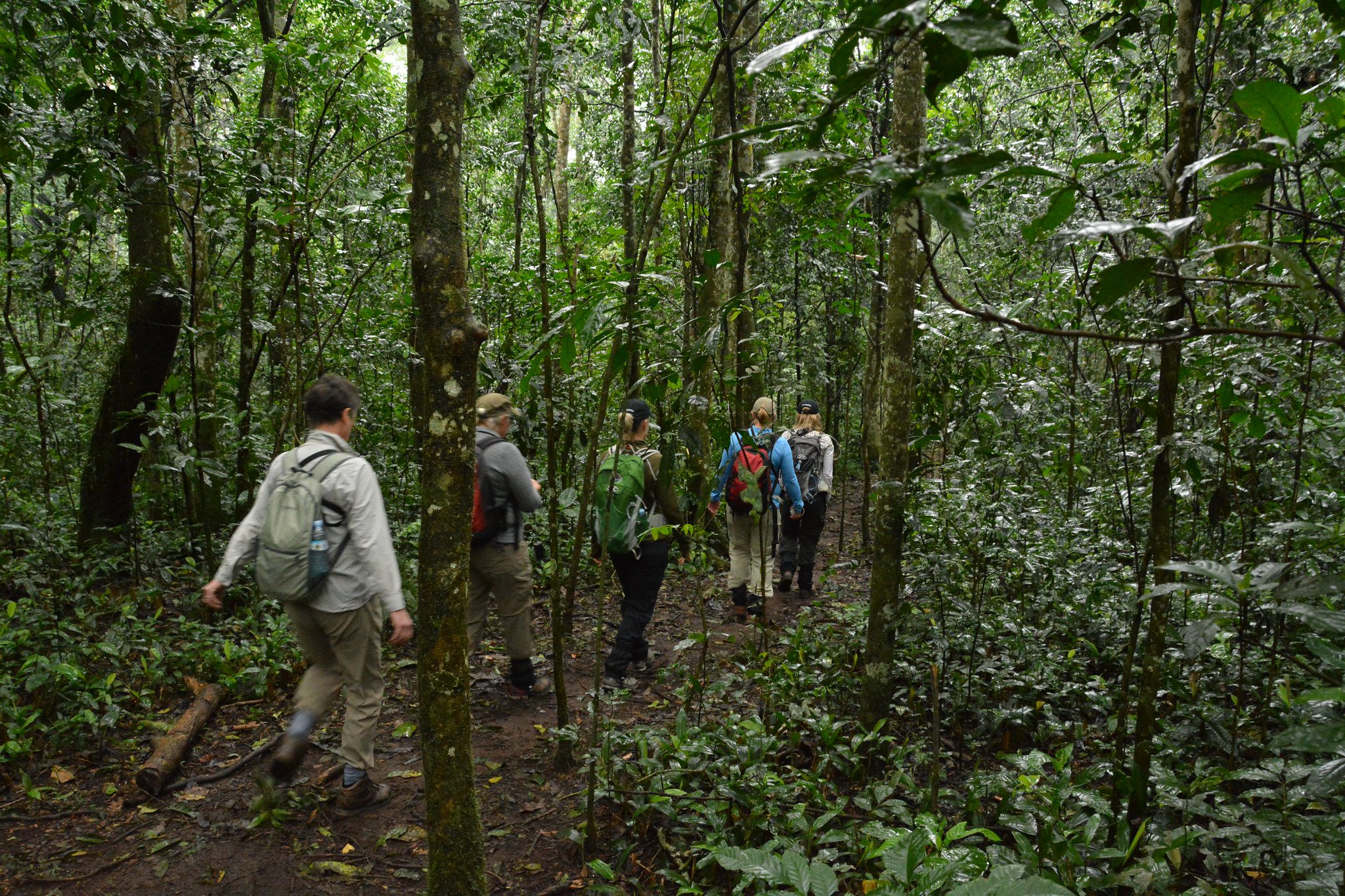
What’s The Big Deal With Chimpanzees?
Chimps and humans have a lot of similarities, including 98% of our DNA. They exhibit social behaviour and live in groups of up to 120 chimps, equivalent to a small human settlement. Chimpanzees take care of each other’s children. Chimps have squabbles with their siblings. Young children like playing and inventing new games, much to the chagrin of parents. Despite cultural differences, tools are used by both cultures.
How Long Does A Chimpanzee Trek Last?
Chimpanzee hikes can vary greatly depending on where you go. Because they regularly reside near roads and paths in numerous parks, you are likely to spot multiple chimps during a two to three-hour guided walk.
The chimps live in separate regions of other parks. Your chimp excursion might go all day. Get up early in the morning when it’s still dark to start following chimps when the sun comes up. Then follow them with the help of competent advisors. You may have to traverse difficult terrain and deep underbrush. Taking these walks, on the other hand, is pleasurable since you may come across beautiful birds, interesting monkeys, and other strange species along the way.
A visit to a few sanctuaries may just take a few minutes. These sanctuaries house chimps that were formerly maintained in captivity and later released back into the wild, as well as many other endangered animals. Chimpanzees are free to travel in the wild, but many of them are still wary of humans and prefer to cluster near tourist centres and other places frequented by “hairless apes.” They are as curious as we are about what their evolutionary cousins are up to!
What Precautions Should I Take While Going On A Chimpanzee Trekking Safari?
We are all aware of how rapidly illnesses may spread in today’s society. But did you know that both chimps and humans may have a range of diseases? As a result, if you’re feeling under the weather, avoid going on a chimp walk.
Even if you’re in fantastic shape, you shouldn’t get too near to chimps when you encounter them out on a journey. Follow the directions of your guide, but a decent rule of thumb is roughly 25 feet. This protects humans as well as chimps against pathogens. It also conveys to the chimps that you are not a threat.
Other things to consider:
Avoid eating in the company of the chimps. As your primary school instructors told you, eating in front of others is disrespectful if you are not willing to share. Sharing with a wild chimp is also something you should avoid. (Of course, they might not have stated that.)
No flash photography; the flashes may frighten or confuse the chimps.
The Best Places In Uganda To See Chimpanzees
Murchison Falls Conservation Area, Budongo Forest
Budongo Forest, near the southernmost tip of the Murchison Falls Conservation Area, is home to 600-700 chimps. They are scattered around the 500-square-mile forest in a variety of communities. Each community is made up of a tiny human village-sized group of 50 to 120 chimps.
The best possibility of spotting one of these chimps is in Kaniyo Pabidi, an area on the northeastern fringe of Budongo Forest. Chimpanzee treks in Kaniyo Pabidi take occur in the morning and afternoon, as opposed to mountain gorilla treks, which always begin in the morning. This region may be explored in the morning or afternoon.
Have you ever considered what it would be like to be Jane Goodall for a day? Kibale Forest National Park has additional information.
Kibale Forest is an hour’s drive from Fort Portal in Western Uganda. The forest is a haven for primates, with chimps being the most well-known occupants. There are two ways to get up close and personal with this intriguing species in Kibale:
Take a monkey hike in the morning or afternoon.
Spend the day with field biologists studying chimps.
The field choice is truly one-of-a-kind. You’ll spend the full day observing and documenting the behaviour of one group of chimps. This is a dream come true for individuals who love primates and wish to be researchers.

Queen Elizabeth National Park’s Kyambura Gorge
Kyambura Gorge in Queen Elizabeth National Park is a verdant jungle that is home to habituated chimps and various other animals. A monkey trip is best in the early when the weather is cooler. However, midday hikes are also possible.
Because the paths are well-maintained, there aren’t many severe inclines once you’re within the canyon. However, the ascent out of the gorge is steep and difficult. After your walk, relax with a cup of coffee at a local women’s cooperative that promotes chimp conservation.
Chimpanzee Sanctuary on Ngamba Island
The Ngamba Island Chimpanzee Sanctuary, a short boat trip from Entebbe, provides a secure sanctuary for chimps rescued from the pet or bushmeat trades or freed from labs. Without any surrounding predators, they may safely re-learn to be wild at their own leisure.
The chimps are allowed to wander, explore their environment, and go on foraging trips. Carers boost feedings of fruits and other delights twice a day to ensure that chimps who are less competent at foraging have a balanced diet. Visitors get a unique opportunity to get up close and personal with chimps by witnessing feedings from an elevated catwalk. Visitors may also take a walk around the island to see chimps in their natural forest environment.
The Semliki Valley, located deep within Uganda’s western rift valley, is a major conservation area. In comparison to other chimps, the chimps in this region are well-known for routinely standing and walking on two legs. They are also skilled engineers, digging tiny wells to acquire drinking water during the dry season.
They are also calmer than most other chimps. According to the scientists of the Simliki Chimpanzee Project, they have fewer conflicts that result in injury. They hunt less often than other chimps.
The Best Places In Tanzania To See Chimpanzees.
Jane Goodall began her seminal research on chimp behaviour in Gombe in 1960. The work she started has now been joined by an international team of primatologists and ecologists, and it is still ongoing!
The Gombe National Park is Tanzania’s smallest national park. A short stretch of monkey habitat traverses cliff faces and river basins north of Lake Tanganyika. The remaining animals in Gombe are largely primates. Red-tailed and red-colobus monkeys prefer the forest canopy, whereas beachcomber olive baboons reside on the forest floor.
Rubondo Island, which is protected by the waters of Lake Victoria, provides a haven for vulnerable and endangered animals. After being raised in European circuses and zoos, chimps arrived on the island in the 1960s. They have thrived in this environment, giving birth to incredibly wild new generations.
Walking and trekking are the only ways to explore this island. Even though chimps are your major attraction, the island’s African grey parrots, who are among the world’s brightest birds, are a must-see. Even though they are not native to Tanzania (they come from farther west), these parrots were brought here after being rescued from the illicit pet trade. They may occasionally be seen near chimps since they eat many of the same foods, notably figs. Many natural creatures are expected to be there, including the elusive Sitatunga antelope and the stately hippo.
Mahale Mountains National Park
Mahale Mountains National Park is one of Africa’s best-kept wildlife-watching secrets. There are around 800 chimps living amid its green slopes. Although chimps are a major attraction, birds convert the slopes into a kaleidoscope of colour every morning. The monkeys are almost as fascinating, with red colobus, red-tailed monkeys, and blue monkeys among them.
Chimp hikes are available all year. Between July and November, when the park’s natural species congregate around depleting water sources, is the greatest time to visit.
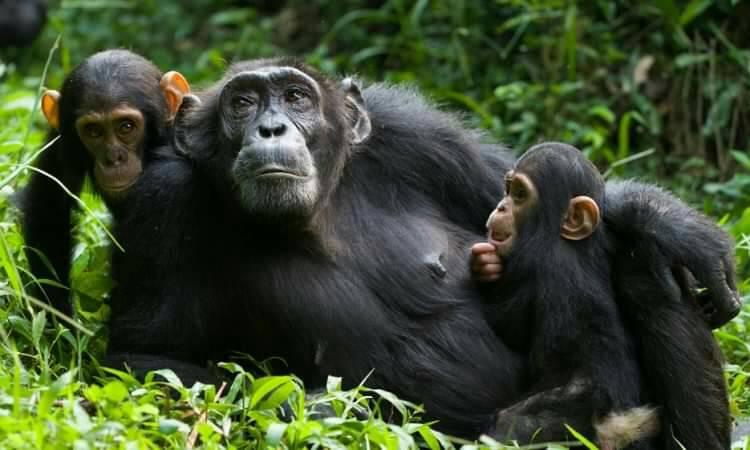
The Best Places In Rwanda To See Chimpanzees.
Nyungwe Forest, home to 14 distinct primate species, is a primate enthusiast’s dream. Other primates you could see besides chimps are blue monkeys, L’Hoest monkeys, and the critically endangered golden monkey.
In reality, the bulk of Rwanda’s chimps live in Nyungwe Forest National Park. Because of their large range, finding these chimp groups may be difficult; if you go chimp trekking for only one day throughout the year, your odds of sighting them are around one in three. Visiting the park on many occasions increases your chances.
There are greater possibilities to view chimps from June to August when fig trees are exploding with fruit. A fig tree laden with fruit is like an ongoing free feast for chimps. Chimps, like humans, move more slowly after eating a lot.
In Nyungwe, there is a wide network of well-kept walking trails, one of which is a suspended walkway high in the canopy from which you may observe animals you would not otherwise see. If you’re seeking for chimps, you may need to divert from the trail.
The Best Places In Kenya To See Chimpanzees
Despite the fact that chimps are not native to Kenya, the Sweetwaters Chimpanzee Sanctuary in Ol Pejeta Conservancy is home to a group of rescued chimps that live in the wild. Because they were abandoned or rescued from human mistreatment, these chimps lack the abilities required to thrive totally on their own. After being returned to health, the chimps spend their days exploring, climbing, socialising with one another, and relearning what it is to be a chimp. The Jane Goodall Institute is helping to fund this great project.
How did a chimp sanctuary come to be in Kenya? Due to the country’s civil strife, a rescue centre in Burundi was in jeopardy in the early 1990s. Ol Pejeta agreed to provide these chimps with a safe haven.
You could see some of the original chimps during your stay as they enjoy their golden years in this tranquil setting.
SAVE THE DATE FOR YOUR EAST AFRICAN CHIMPANZEE TREKKING SAFARI!
It is worthwhile merely to view the chimps in East Africa. But why stop there when you can embark on the safari of your dreams? Visit the Big 5, experience the Great Wildebeest Migration, learn about local traditions, and ride in a hot air balloon for a bird’s-eye perspective of Africa! All In Africa Safaris will customise your tour based on your requirements. Please contact us as soon as possible.

